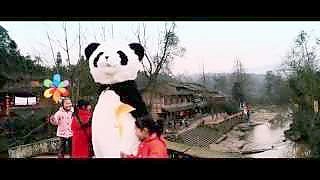With Make It Happen Vlog ...
[video v=EkB9SAK8p88]Videos about Sichuan, China
The beautiful Mount Emei (Emei Shan) SiChuan province, in winter
With Atlas Explore China ...
[video v=d-0HGKmvUCk]Travel Guide to Mount Emei
Mount Emei, a UNESCO World Heritage Site in Sichuan province, is a sacred Buddhist mountain known for its stunning landscapes, cultural significance, and unique biodiversity.
Getting There
- By Air: Fly to Chengdu Shuangliu International Airport, then take a train or bus to Emeishan City.
- By Train: High-speed trains connect Chengdu to Emeishan Railway Station in about 1.5 hours.
- By Bus: Regular buses run from Chengdu's Xinnanmen Bus Station to Emeishan Scenic Area.
Main Attractions
Baoguo Temple
Located at the foot of the mountain, Baoguo Temple is the starting point for many visitors. The temple houses cultural relics and offers insights into Buddhist traditions.
Wannian Temple
One of the oldest temples on Mount Emei, known for its large bronze statue of Samantabhadra (Bodhisattva of Universal Benevolence).
Golden Summit (Jinding)
The peak of Mount Emei, offering breathtaking views, especially during sunrise. The massive golden statue of Samantabhadra is a highlight.
Monkey Zone
A famous area where visitors can observe wild Tibetan macaques. Exercise caution as the monkeys can be mischievous.
Qingyin Pavilion
A peaceful spot surrounded by lush greenery and flowing streams, perfect for a quiet rest during your climb.
Activities
- Hiking: Explore scenic trails ranging from gentle walks to challenging climbs.
- Buddhist Pilgrimage: Visit ancient temples and participate in ceremonies.
- Photography: Capture stunning vistas, unique flora, and cultural landmarks.
Practical Tips
- Weather: Bring layers as temperatures vary with altitude. Rain gear is essential due to frequent rain showers.
- Footwear: Wear comfortable hiking shoes for the uneven terrain.
- Altitude: Golden Summit is over 3,000 meters high. Take it slow to adjust to the altitude.
- Wildlife: Keep your belongings secure and avoid feeding the monkeys.
- Food: Try local Sichuan dishes at eateries along the route.
First time in China – ChengDu, SiChuan province
With Travel For Phoebe ...
[video v=Ohcqv2G_20o]The extraordinary Emei Shan, SiChuan province
With This Is SiChuan ...
[video v=8xF-ic1Aroo]Mount Emei Visitor Guide: Natural Beauty & Practical Travel Tips
Mount Emei (Emei Shan), located in Sichuan Province, is one of China's Four Sacred Buddhist Mountains and a UNESCO World Heritage Site. With its mist-shrouded peaks, ancient temples, rich biodiversity, and cultural significance, it is a popular pilgrimage site and a destination for nature lovers and history enthusiasts. This guide will help you explore Mount Emei’s natural beauty while providing practical travel advice for a seamless visit.
Golden Summit (Jinding)
Overview: The Golden Summit is the highest point on Mount Emei, offering spectacular views, including the famous "Sea of Clouds." At an elevation of 3,077 meters, the summit is a spiritual hub for Buddhists, with the massive statue of Samantabhadra Bodhisattva serving as a highlight for visitors.
Key Highlights:
- Golden Buddha Statue: The 48-meter tall statue of Samantabhadra Bodhisattva with ten faces is a stunning work of art, representing the mount's spiritual significance.
- Sea of Clouds: On clear mornings, you can witness the mesmerizing "Sea of Clouds" phenomenon, where the clouds form a dense layer beneath the summit.
- Sunrise & Sunset: Watching the sunrise or sunset from the Golden Summit is a breathtaking experience, as the sky turns vibrant shades of orange and pink.
Baoguo Temple Area
Overview: Baoguo Temple is the starting point for most visitors to Mount Emei. Located at the base of the mountain, this area is home to one of the most important temples and serves as a hub for those preparing to explore the mountain.
Key Highlights:
- Baoguo Temple: Built during the Ming Dynasty, this temple is dedicated to the worship of various Buddhist deities. It is an excellent place to start learning about the religious history of Mount Emei.
- Emei Buddhist Cultural Museum: Located within the temple grounds, this museum provides insight into the history of Buddhism in the region, along with relics and artwork.
Wannian Temple (Ten-Thousand-Year Temple)
Overview: One of the oldest and most significant temples on Mount Emei, Wannian Temple dates back over 1,600 years. The temple is perched on the mountainside and offers great views as well as a peaceful environment for meditation and reflection.
Key Highlights:
- Bronze Statue of Samantabhadra Bodhisattva: The temple houses a famous bronze statue of Samantabhadra riding an elephant, which is a major draw for pilgrims.
- Surrounding Trails: The area around Wannian Temple is filled with scenic trails that offer opportunities to explore the mountain’s flora and fauna.
Qingyin Pavilion
Overview: Qingyin Pavilion is a tranquil spot located halfway up Mount Emei, offering a place for rest and meditation. Surrounded by lush forests, clear streams, and waterfalls, it is an ideal location to experience the natural beauty and serene atmosphere of the mountain.
Key Highlights:
- Scenic Bridges: The twin bridges crossing the crystal-clear waters are perfect for photos, and the sound of the running stream adds to the pavilion’s peaceful ambiance.
- Washing Elephant Pool: Located nearby, this sacred pool is associated with Buddhist mythology and is a quiet spot for reflection.
Monkeys of Mount Emei
Overview: The Tibetan macaques are a famous and sometimes mischievous presence on Mount Emei. These monkeys roam freely across the mountain and are often found near tourist areas. While they can be entertaining to watch, visitors should take care as the monkeys may attempt to snatch food or belongings.
Key Highlights:
- Monkey Eco-Zone: Located along the main hiking trail, this area is where the monkeys are most active. Visitors can observe them up close but should avoid direct interaction.
Practical Travel Information for Mount Emei
When to Visit
The best time to visit Mount Emei is from April to October, when the weather is mild, and the views are clear. Spring (April-May) offers blooming flowers, while autumn (September-October) provides colorful foliage. Winter visits are also possible, especially for those interested in snow-covered landscapes, but be prepared for cold conditions at higher altitudes.
Getting to Mount Emei
By Air: The closest airport is Chengdu Shuangliu International Airport, located about 150 kilometers away. From Chengdu, visitors can take a train or bus to Emeishan City.
By Train: The high-speed train from Chengdu to Emeishan Station takes about 1.5 hours. From the station, visitors can take a local bus or taxi to the Baoguo Temple area, the starting point for exploring Mount Emei.
By Bus: Regular buses run from Chengdu’s Xinnanmen Bus Station to Emeishan City, with a journey time of approximately 2 hours.
Accommodation
Visitors can stay in Emeishan City or in the Baoguo Temple area, which has a variety of accommodations, including hotels, guesthouses, and hostels. For those wishing to stay on the mountain itself, there are guesthouses and monasteries offering simple lodging for a more immersive experience. Booking in advance is recommended during peak seasons.
Cultural Sensitivity
As Mount Emei is a sacred Buddhist site, visitors should show respect when visiting temples and monasteries. Modest clothing is recommended, and it’s important to be mindful of local customs, especially when interacting with monks or pilgrims. Refrain from taking photos in sacred spaces unless permission is explicitly granted.
Food and Dining
Sichuan cuisine is renowned for its bold, spicy flavors. In Emeishan, you can find local dishes such as hotpot, mapo tofu, and various noodle dishes. For a unique experience, try the vegetarian meals offered at the mountain's temples, which are simple yet flavorful and often include locally sourced ingredients.
Suggested Itinerary for Exploring Mount Emei
- Day 1: Arrive in Emeishan City, visit Baoguo Temple, and relax in the hot springs nearby.
- Day 2: Hike or take the cable car to the Golden Summit for sunrise. Explore the summit area before descending to Wannian Temple.
- Day 3: Spend the day exploring Qingyin Pavilion and the Monkey Eco-Zone. Enjoy a tea break at a mountain tea house before returning to Emeishan City.
DaoCheng YaDing – ‘The Last Shangri-La’ – SiChuan province
With Travel With Fawn ...
[video v=rb89zaap_nM]Daocheng Yading: The Last Shangri-La
Introduction
Daocheng Yading, often referred to as "The Last Shangri-La," is located in the southwestern part of Sichuan Province, China. This remote and pristine region is part of the Garzê Tibetan Autonomous Prefecture and is renowned for its stunning natural beauty, including majestic snow-capped mountains, clear alpine lakes, and lush forests. Daocheng Yading is considered one of the most beautiful places in China, attracting travelers seeking untouched landscapes and spiritual solace.
Geography and Location
Daocheng Yading is located at an altitude of over 4,000 meters (13,123 feet) above sea level. It is part of the Hengduan Mountain Range, where the Tibetan Plateau begins. The area is characterized by its unique geological formations, including towering peaks, deep valleys, and a series of glacial lakes. Its remote location has helped preserve its natural beauty and biodiversity, making it a haven for both nature lovers and wildlife enthusiasts.
Historical and Cultural Significance
Yading holds a special place in Tibetan Buddhism and is considered a sacred site. The three main peaks of Yading—Chenrezig (Xiannairi), Jampayang (Yangmaiyong), and Chanadorje (Xialuoduoji)—are believed to be manifestations of Bodhisattvas, making them objects of pilgrimage for Tibetan Buddhists. Throughout history, pilgrims have journeyed to Yading to pay their respects, meditate, and seek blessings.
The region is also home to several Tibetan communities that have maintained their traditional way of life. Visitors to Daocheng Yading can experience Tibetan culture, including local customs, religious practices, and Tibetan cuisine. The presence of Tibetan monasteries and prayer flags throughout the landscape adds to the spiritual ambiance of Yading.
Scenic Highlights
- Three Sacred Mountains: The iconic peaks of Chenrezig (6,032 meters), Jampayang (5,958 meters), and Chanadorje (5,958 meters) are the main attractions of Yading. These snow-capped mountains are not only visually stunning but also spiritually significant. Chenrezig, the highest peak, is named after Avalokiteshvara, the Bodhisattva of Compassion.
- Milk Lake (Niunai Lake): A striking turquoise glacial lake located at the base of Jampayang. Milk Lake's vivid color and the surrounding rugged terrain make it a popular destination for hikers and photographers.
- Five Color Lake (Wuse Lake): Located near Milk Lake, Five Color Lake is famous for its ability to reflect multiple colors due to the minerals in the water and changing light conditions. The lake's surface can display hues of blue, green, yellow, and even purple, depending on the time of day and weather.
- Luorong Pasture: A high-altitude meadow that offers spectacular views of the three sacred mountains. This pasture is a serene spot for visitors to rest and take in the natural beauty, with yaks grazing amidst the backdrop of towering peaks.
- Chonggu Monastery: An ancient Tibetan Buddhist monastery located at the entrance of Yading Nature Reserve. The monastery provides insights into Tibetan religious practices and serves as a spiritual gateway to the sacred mountains.
Trekking and Hiking Routes
Daocheng Yading is a paradise for trekkers and adventure enthusiasts. Several well-marked trails offer varying levels of difficulty, catering to both casual hikers and experienced trekkers. The most popular trekking route is the Yading Outer Kora, a challenging multi-day trek that circles the three sacred mountains. This trek provides a comprehensive experience of Yading's natural beauty and spiritual significance.
Another popular option is the Inner Kora, a shorter but still demanding trek that takes hikers closer to the base of the sacred peaks. For those seeking a less strenuous experience, day hikes to Milk Lake and Five Color Lake offer stunning views and a taste of Yading's grandeur without the need for extensive trekking.
Flora and Fauna
Daocheng Yading is known for its rich biodiversity. The region's varied altitudes and climates support a wide range of plant and animal species. The lower altitudes are covered in dense forests of pine, fir, and rhododendron, which bloom spectacularly in spring. As you ascend, the landscape transitions to alpine meadows, home to wildflowers and medicinal herbs.
The region is also a sanctuary for wildlife, including species such as the Tibetan antelope, red panda, snow leopard, and various birds of prey. Birdwatchers will find Yading to be a prime location for observing both resident and migratory bird species. Efforts are made to preserve the ecological integrity of Yading, making it a model for conservation in China.
Climate and Best Time to Visit
The climate of Daocheng Yading is characterized by cold winters and mild summers, with significant temperature variations between day and night. The best time to visit is during the spring (April to June) and autumn (September to October) months. In spring, the region comes alive with blooming flowers and lush greenery, while autumn offers stunning foliage and clear skies, making it ideal for photography and outdoor activities.
Winter visits are possible but can be challenging due to heavy snowfall and cold temperatures, which may restrict access to some areas. Travelers should be prepared for high-altitude conditions year-round and pack accordingly.
Travel Tips and Recommendations
- Altitude Sickness: Daocheng Yading is located at a high altitude, and visitors may experience symptoms of altitude sickness, such as headaches, dizziness, and nausea. It is advisable to spend a day acclimatizing in Daocheng town before ascending to Yading.
- Accommodation: Accommodations in Yading range from basic guesthouses to more comfortable hotels in Daocheng town. It's recommended to book in advance, especially during peak seasons.
- Permits: Foreign visitors may require permits to enter certain areas of the Tibetan Autonomous Prefecture. It's best to check with local authorities or travel agencies for the latest requirements.
- Guided Tours: Hiring a local guide can enhance your experience by providing insights into the culture, history, and natural features of Yading. Guides can also help navigate the trekking routes and ensure a safe journey.
- Respect Local Customs: As a region with deep cultural and religious significance, visitors should respect local customs and traditions. This includes not disturbing prayer flags, stupas, or other religious artifacts, and seeking permission before photographing people or religious ceremonies.
Getting There
Daocheng Yading can be accessed by air and road:
| Transport Mode | Details |
|---|---|
| By Air | Daocheng Yading Airport is the world's highest civilian airport, located at an altitude of 4,411 meters. Direct flights are available from major Chinese cities such as Chengdu, Chongqing, and Xi'an. From the airport, visitors can take a bus or taxi to Daocheng town and then to Yading. |
| By Road | Road travel to Daocheng Yading involves scenic but long drives through mountainous terrain. Buses and private vehicles can be hired from Chengdu, with the journey taking around 20-25 hours. The drive, though lengthy, offers spectacular views of the Tibetan Plateau and the chance to explore other attractions en route. |
Mount QingCheng (青城山) and DuJiangYan (都江堰), near ChengDu, SiChuan province
With Char 787 ...
[video v=pHdilci_CI4]With Nick in China ...
Plus more videos ...
Good morning ChengDu! SiChuan province
People's Park.
With Walk - Fly - Drive ...
[video v=wLDwz1m5fr4]First time in China – ChengDu, capital city of SiChuan province
With Ride With Gabi ...
[video v=dSnZiKYnL1Y]The awesomely beautiful Mount SiGuNiang (Four Sisters Mountain) 四姑娘山, SiChuan – Don’t miss it
With Travel with Fawn ...
[video v=fX-sKrd60UA]Welcome to Mount Siguniang
Discover the majestic beauty and adventure of Mount Siguniang.
Introduction
Mount Siguniang, also known as Four Sisters Mountain, is a scenic mountain range located in Sichuan Province, China. It is renowned for its stunning peaks, diverse wildlife, and picturesque landscapes, making it a popular destination for hikers, climbers, and nature enthusiasts.
Location
Mount Siguniang is situated in Xiaojin County, Aba Tibetan and Qiang Autonomous Prefecture, Sichuan Province. It is approximately 220 kilometers west of Chengdu, the provincial capital.
History
Mount Siguniang has long been regarded as a sacred place by the local Tibetan and Qiang ethnic groups. The name "Siguniang" translates to "Four Sisters," referring to the four distinct peaks in the mountain range. Over the years, the area has become a significant site for both cultural heritage and ecological conservation.
Attractions
- Four Peaks: The mountain range features four prominent peaks: DaFeng (Big Peak), ErFeng (Second Peak), SanFeng (Third Peak), and Yaomei Feng (Youngest Sister Peak), the highest being Yaomei Feng at 6,250 meters.
- Shuangqiao Valley: Known for its beautiful forests, meadows, and streams, offering an accessible and scenic hiking experience.
- Changping Valley: Famous for its dense forests, alpine meadows, and views of snow-capped peaks, ideal for trekking and photography.
- Haizi Valley: Features glacial lakes, diverse flora, and stunning vistas, perfect for longer and more challenging hikes.
- Bipenggou Nature Reserve: A neighboring reserve known for its pristine landscapes and biodiversity.
Activities
- Hiking and Trekking
- Mountain Climbing
- Camping
- Photography
- Wildlife Watching
- Cultural Tours
Facilities
- Visitor Center
- Restrooms
- Accommodations (Hotels, Guesthouses)
- Camping Sites
- Food Stalls and Restaurants
- Parking Lots
- Guided Tour Services
Visitor Tips
- Wear appropriate clothing and footwear for hiking and mountain conditions.
- Bring sufficient water and snacks, especially for longer treks.
- Check weather conditions and plan your visit accordingly.
- Acclimatize to the altitude gradually to avoid altitude sickness.
- Respect local customs and traditions, particularly when visiting Tibetan cultural sites.
- Follow all park regulations and guidelines to preserve the natural environment.
Hiking the GongGa mountain trail, SiChuan province
With Men's Journal ...
[video v=4e1aLX9cCTA]About the GongGa Trail
Mount GongGa, also known as Minya Konka, is the highest peak in SiChuan province, China, standing at 7,556 meters (24,790 feet). The Gongga Trail offers a challenging yet rewarding trekking experience, featuring stunning landscapes, glaciers, and traditional Tibetan villages. It is a popular destination for adventurers and nature enthusiasts looking to explore the remote and pristine beauty of the region.
Hiking Trails
Hailuogou Glacier Park Trail
The Hailuogou Glacier Park Trail is one of the most accessible routes on Mount Gongga. It features stunning views of glaciers, hot springs, and lush forests. This trail is suitable for trekkers of all levels and can be completed in 2-3 days.
Yulongxi Trail
The Yulongxi Trail offers a more challenging trek with breathtaking scenery, including high-altitude lakes, meadows, and snow-capped peaks. This trail takes about 4-5 days to complete and requires a good level of fitness.
Kangding to Gongga Monastery Trail
This trail starts in Kangding and leads to the Gongga Monastery, providing trekkers with an opportunity to experience local Tibetan culture and stunning natural beauty. The trek takes approximately 5-6 days.
Old Chengdu-Kangding Tea-Horse Road
This historic trail follows the ancient trade route, offering a blend of cultural and natural attractions. Trekkers can enjoy scenic vistas, traditional villages, and historical sites along the way. The trek can take 7-10 days depending on the chosen route.
Famous Guesthouses
Hailuogou Grand Hotel
Located at the entrance of Hailuogou Glacier Park, Hailuogou Grand Hotel offers comfortable accommodation and easy access to the glacier. It is a great base for starting the trek.
Gongga Shan Hotel
Situated in Kangding, Gongga Shan Hotel provides modern amenities and a convenient location for trekkers heading towards Mount Gongga. The hotel offers stunning views of the surrounding mountains.
Konka International Youth Hostel
Located in the town of Luding, Konka International Youth Hostel is popular among backpackers and budget travelers. It offers basic accommodation and a friendly atmosphere.
Minya Konka Guesthouse
Near the Gongga Monastery, Minya Konka Guesthouse provides an authentic Tibetan experience with traditional architecture and hospitality. It is a perfect stop for trekkers on the Kangding to Gongga Monastery Trail.
Transport
Mount Gongga and the Gongga Trail are accessible from major cities in Sichuan province. Here are some ways to get there:
- From Chengdu: Buses and private transfers are available from Chengdu to Kangding, taking approximately 6-7 hours. From Kangding, you can hire a local guide or take a bus to the trailhead.
- From Kangding: Local buses and taxis can take you to various trailheads, including Hailuogou Glacier Park and Yulongxi. The journey time varies depending on the destination.
- By Car: Renting a car is a flexible option for those who prefer driving. The roads to Kangding and surrounding areas are well-maintained, offering scenic views along the way.
ChengDu, SiChuan province - city of relaxation
With WilleneBusinessLifestyle ...
First impressions of China - ChengDu, SiChuan province
With Two Mad Explorers ...
Modern ChengDu, SiChuan province
With Walk East ...
ChengDu, capital city of SiChuan province
With i-PK MOVIE ...
Yellow River highlands scenery in SiChuan province
With Little Chinese Everywhere ...
ChengDu, SiChuan province to Lhasa, Tibet province, by coach - a breathtaking journey
With Yin's Travel ... Bonus film - driving on the XinJiang-Tibet highway, Kudi to Mazha - with Walk China ...
A look at ChengDu's metro system, SiChuan province
With Rafa Goes Around! ... Bonus films - with Walk East ... The WuHan Metro ...
A day in ChengDu, SiChuan province
With Byanca G ...
The ChengDu metro system, SiChuan province
With Walk East ...
With Trevor / The Food Ranger ...
With Walk East ...
Provincial capital of SiChuan. Lacquer artist ... ChengDu TianFu airport ... 3 a.m. ...
SiChuan province ... Bonus films ...
Expat life in ChengDu, SiChuan province
Discover the lives of various expats who now call ChengDu their home - their work, leisure and thoughts ...
[xvideo v=QRafITNPXIE][xvideo v=JKkr9qgsRNc]
11 / 11 - 'Singles' Day'. Maybe being an inseparable 11 is the better way compared to 11 ? 2 (1). Maybe that other 1 is art, or all humanity. Whatever it is for you - live more ... Four great romantic short stories from SiChuan province, in south west China ... If you can, please help us out with a donation (see the top of the sidebar on the right)
ChengDu 成都, provincial capital of SiChuan
SiChuan pork 'fire noodles' - from scratch
YiBin Ran Mian. How to prepare and cook SiChuan noodles ...
JiuZhaiGou and HuangLong National Park 九寨沟 + 黄龙
In SiChuan province ...
China 中国 from the air - a breathtaking journey ...
These amazing films capture the beauty of nature and city ... Don't miss it ! The best videographers. The best music. Turn up the volume; relax; let's go ... Hong Kong The Great Wall (JinShanLing / SiMaTai, close to Beijing) QingHai province JiuZhaiGou and HuangLong, SiChuan province Crescent Moon Spring / Lake, 6 km from DunHuang, GanSu province, north west China Guilin and YangShuo, GuangXi province The Tibetan Plateau, far south west China HuiZhou, GuangDong province, south east China TianShan Mountain area, XinJiang province, far west China MoGao Grotto, YuMenGuan, YangGuan, JiaYuGuan, YaDan, DanXia; all in GanSu province Tian Tan Giant Buddha, Hong Kong GuangZhou, provincial capital of GuangDong and close to Hong Kong Various places in China
Provincial capital of SiChuan. Bonus film - a day in the life of a China vlogger ...
A composition of aerial and time-lapse scenes ...
A short story for the Chinese New Year. The Spring Festival is about a new year, a new beginning. A time of renewal, and hope and a fresh start, a time of good-will. For example, fireworks, apart from being a joy to all, are to scare away bad spirits. One can see this symbolize the breaking of old habits of thought - a spring clean of the mind. A new year is a new chance for a better life - if you will take it. Keep your eyes open, heart abundant, and strive for a better world. Help others on their journey whenever you can and always share a smile. It may help another, but it will certainly be good for you. Someday, even the mountains will be gone. But right now we are alive, and we can make a difference. When faced with bad-will, take it on the chin and return only affection. It might leave a seed for the future; at least, it will not get you down. As the film says, yes, it is love that brings us closer to happiness ... Above all, the Spring Festival is a time for family. And ultimately, we are all sisters and brothers breathing the same air ...
Amazing street food along the ancient Tea Horse route in SiChuan province
Join Trevor James, the 'Food Ranger', on an epic culinary journey ...
TaGong 塔公, in a Tibetan part of western SiChuan province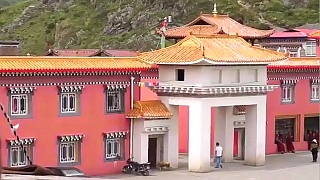
Known as Lhagang! Tashi Delek in Tibetan. TaGong Monastery lies within beautiful hilly grasslands ...
Welcome to beautiful ChengDu 成都 ...
Chéngdū is the capital of SiChuan province.
Beautiful Mount EMei (EMeiShan 峨眉山) from the air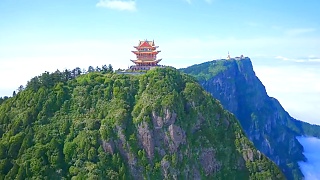
The first Buddhist temple in China was constructed here in SiChuan province in the 1st century A.D. The addition of other temples has turned Éméi Shān into one of Buddhism's holiest sites and is one of the four sacred Buddhist mountains of China. All in all, there are now seventy six Buddhist temples and monasteries, most of them located near the mountain top. The first two films focus on the most well-known - the Golden Summit and the 48 meters tall statue of Samantabhadra, known in Mandarin as PǔXián PúSà 普賢菩薩.
ChongZhou 崇州, ChengDu, SiChuan province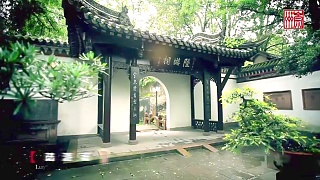
Chóngzhōu lies about 35 kilometers west of downtown ChengDu. A beautiful film ...
A special culinary treat ! Trevor James, the 'Food Ranger', explores the dining scene in ChengDu, SiChuan province ...
Beautiful HuangLong 黃龍 Scenic Area, SiChuan province
HuangLong ('Yellow Dragon' - the appearance of the pools along HuangLong Valley) lies 150 kilometers (93 miles) north-northwest of the provincial capital ChengDu. All in all, it covers an area of almost 2,000 square kilometers. This area is known for its colorful pools formed by calcite deposits, as well as diverse forest eco-systems, snow-capped mountain peaks, waterfalls and hot springs. There are also a number of temples. HuangLong is also home to the Giant Panda.
The temples and natural landscape around Mount EMei 峨嵋山 and LeShan Giant Buddha 乐山大佛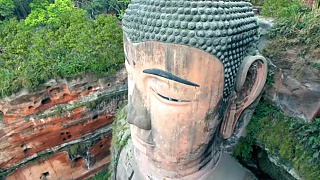
A beautiful film of the scenic area around ÉMéiShān and LèShān Dàfó, SìChuān province. Mount EMei is one of the Four Sacred Buddhist Mountains of China on which there are nearly 70 Buddhist monasteries. At 71 meters (233 feet) in height, LeShan Giant Buddha is the largest stone Buddha in the world.
EMei Shan 峨眉山, SiChuan province, in Ultra HD / 4K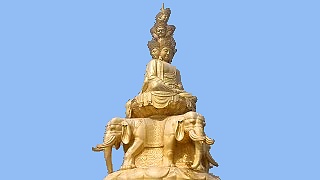
Emei Shan (Emei Mountain, 3,099 m / 10,167 ft) is one of the four Chinese Buddhist sacred mountains. Emei Shan is a UNESCO World Heritage Site (together with the nearby LeShan Giant Buddha) as "an area of exceptional cultural significance as it is the place where Buddhism first became established on Chinese territory ... The first Buddhist temple in China was built on the summit of Mount Emei in the 1st century CE ... Mount Emei is also notable for its exceptionally diverse vegetation, ranging from subtropical to sub-alpine pine forests. Some of the trees there are more than 1,000 years old." Included in this beautiful film : the summit of Mount Emei, WanNian Si Temple, QingYin Ge and BaoGuo Si Temple.
Chinese New Year : The people's fireworks, ChengDu 成都
What it is like in a Chinese city during the Spring Festival ... Warning - loud !
Panda Base : The Panda Research Center in ChengDu 成都
This center, 成都大熊猫繁育研究基地, in SiChuan province, has been created to imitate the natural habitat of the Giant Panda and other rare species, for research, breeding and education. One can also see the so-called Red Panda. Bonus films : ChengDu city center at night ... 10 great places to visit in ChengDu ... 11 : The largest building in the world: the New Century Global Center ... And ChengDu in timelapse ...
JiuZhaiGou 九寨沟 : Autumn into Winter (Ultra HD / 4K)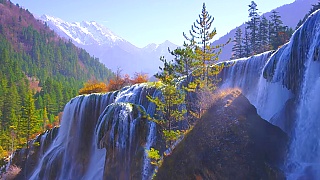
'Nine Villages Valley', SiChuan province. Aqua pools, streams and waterfalls, and snow capped peaks, surrounded by red and gold leaves - a very beautiful place ...
SiChuan 四川 province - "The power of Nature"
A charming micro movie that takes you to some of the many beautiful places in SiChuan province ...
LeShan Giant Buddha 乐山大佛, Mount Emei 峨眉山 Scenic Area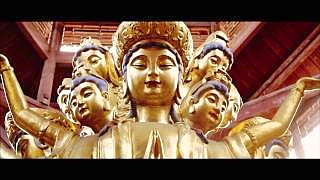
The LeShan Giant Buddha 乐山大佛 is located in SiChuan province and is a 233 foot tall stone statue constructed during the Tang Dynasty. Emei Shan (3,100 meters / 10,200 feet) is one of the four Chinese Buddhist sacred mountains. Emei Shan is UNESCO World Heritage Site (together with the Leshan Giant Buddha) : "...an area of exceptional cultural significance as it is the place where Buddhism first became established on Chinese territory... The first Buddhist temple in China was built on the summit of Mount Emei in the 1st century CE." Documentaries ...
JiuZhaiGou 九寨沟 and HuangLong 黄龙 scenery, SiChuan province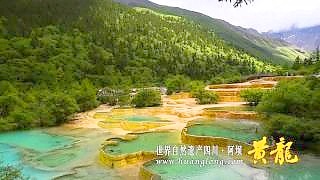
Clear pools and waterfalls ...
Buddhism in SiChuan 四川, including EMeiShan and LeShan Giant Buddha
The 'Panda Base' Research, Education and Breeding Center, ChengDu 成都
SiChuan province. 成都大熊猫繁育研究基地
Ngawa (Aba), 阿坝镇, SiChuan province
Ngawa, also known as Aba town, 阿坝镇 is the seat of Ngawa (Aba) County, within the Ngawa (Aba) Tibetan and Qiang Autonomous Prefecture in north-western SiChuan. It is located on the Tibetan plateau at an elevation of 3,200 metres. The city is about 250 km from Ma'ErKang and 160 km from HongYuan. Ngawa (Aba) County has 70,000 inhabitants, about 8,000 of them Tibetan monks while the city itself has about 20,000 people. There are 37 monasteries in the area, two of the largest within the city. There are grasslands and forested valleys to the south.
Hiking trip to the 'Big Peak' (5025m), Mount SiGuNiang 四姑娘山
Mount SiGuNiang, in SiChuan province, is famous for its beautiful scenery. The surrounding area is reputed to be the "Oriental Alps". Mount SiGuNiang National Park is a UNESCO World Heritage Site. The park comprises Mount SiGuNiang and the surrounding three valleys, namely ChangPing Valley (长坪沟), HaiZi Valley (海子沟) and ShuangQiao Valley (双桥沟), covering an area of 2,000 square kilometers. Mount Siguniang










